PART 2 FROM STUDIO TO SITUATION post 2
Exercise: PRACTITIONERS
I have selected the following practitioners because together they represent five different aspects of my practice: Etel Adnan – poetry and language as an essential element of her creative work, Richard Hearns – the physicality of his use of paint, Hollis Taylor – expressive and creative response to bird sound, Tania Kovats – the challenge to my concept of drawing, Albert Irvin – colour and abstraction
Etel Adnan
Richard Hearns
Hollis Taylor
Tania Kovats
Albert Irvin
Etel Adnan
Adnan is a Lebanese American poet and artist, born in Beirut, lived in California for fifty years before moving to Paris.
In an interview she said, “My painting is very much a reflection of my immense love for the world, the happiness to just be, for nature and the forces that shape the landscape.” Such simple truth just struck a chord with me and summed up the reason I paint.
Her painting is very different to mine but I’m drawn to the peace and colour in the work. Another reason I am interested in her work is her use of leporellos, accordion folded booklets, used by the Japanese for poetry, or by the Chinese for writing and landscapes. She uses them for a variety of reasons – unpublished poems and fragments, paintings.
Adnan is certainly responding to the natural world in her paintings but to bring her own sense of happiness to it, unlike many contemporary artists. She believes passionately that art has an important place in a troubled world. She uses language through her poetry alongside her painting to find expression.
What can you learn from them?
Age doesn’t matter.
Adnan’s confidence in her unique creativity is inspiring. She is not trying to fit into a contemporary mould.
I find I relate to her philosophy. She paints because it makes her happy and in doing that, she is also making a statement for the world. There is the element of activism there in her writing but it is done through hope and beauty in her painting. It is gentle.
I relate also to the breadth of her practice. Her creativity finds expression through language – novels, poetry – and also through painting, tapestries. Her interest in leporellos resonates with me as it is something which I have experimented with in my own practice. She says, “You know, in Japanese and Chinese culture, traditionally, you don’t have images on the wall, but in books. You open a drawer, take out a book – you’re able to look for as long as you want. The gesture of looking at an image, and the way you read a poem, gets closer to an affinity between the arts. You understand that visual art is a matter of meditation, like a poem…”
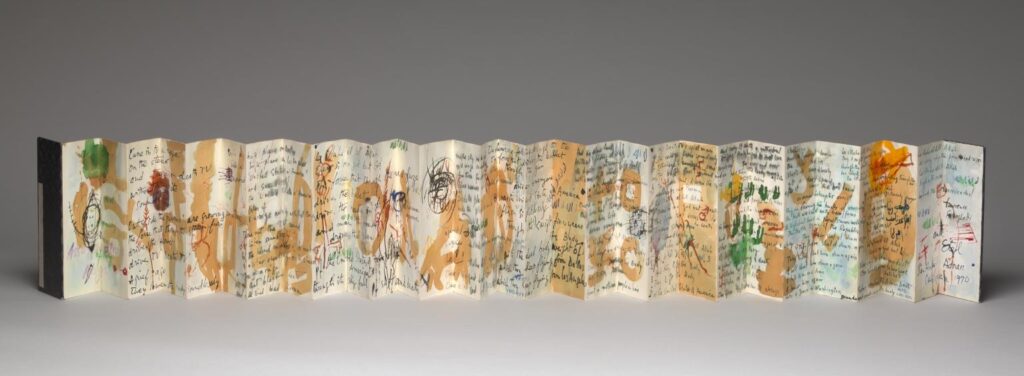
Untitled 1970 Etel Adnan born 1925 Purchased with funds provided by an anonymous donor 2018 http://www.tate.org.uk/art/work/T15063
Richard Hearns
I have only recently come across the work of Richard Hearns and I am enjoying getting to know him through his painting. Hearns is a Lebanese born Irish contemporary artist.
His subject matter is varied and I’m interested in this aspect. The early work is representational, highly detailed and quite beautiful and you can see the deeply contemplative nature of his painting already evident. This is an element I want to explore in my own work which at present centred on abstraction but I believe that abstraction can be expressed in many ways.
The subject matter is also varied and at present the work explores the alchemy of paint. The large images, almost life size, require a physicality which is exciting together with his sense of colour.
I think he is responding to the landscape in the large abstract work, not visually but where he himself finds identity. I love that his work talks to me of a search, a journey. Like me, he is a migrant and so there is another landscape inside and perhaps this is also where we both meet as artists.
What can I learn from him?
The physicality of his use of paint.
I feel a connection with the images themselves which are full of energy and the search. In the pictures I’ve seen he has displayed the very large canvases on the top of a barren Irish landscape and I relate to the total contrast. He is his own landscape and I can see the land of his birth and country of his life now happily and startlingly comfortably at peace with each other. But there is no compromise. As I continue to work through memories of my country of birth and relate this to my present life, I find that Hearns’ visual understanding and expression very encouraging.
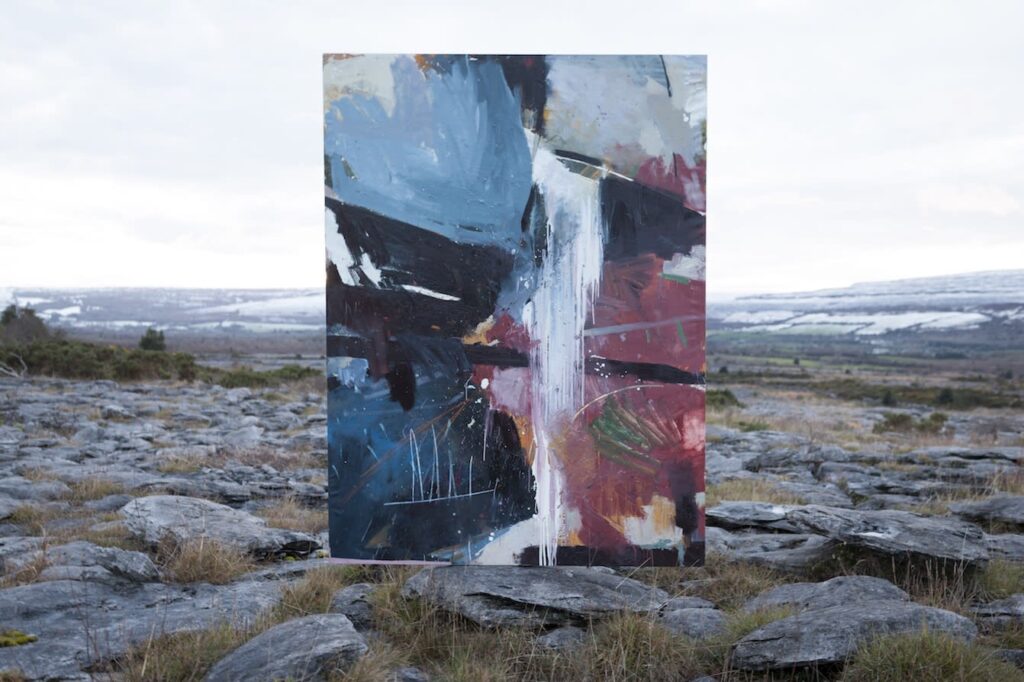
Cascade by Richard Hearns
Hollis Taylor
I have found it difficult to find another visual artist who is working with ‘sound’ as I do. I have researched sound art, sound artists and realise that these are not areas in which my work fits. ‘Sound’ (at present in the garden) for me represents a deeper understanding and inner ‘seeing’ of the landscape than simply using sight. So it is a response to sound in visual form which informs the work. And this goes way beyond just attempting to draw sound.
So I have had to find my inspiration primarily from reading writers who are able to express the ideas I am working with in language – The Soundscape by R. Murray Schafer, The Land’s Wild Music by Mark Tredinnick, Ocean of Sound by David Toop and others.
My work with sound began with listening to the song of birds both in Australia and here in my English garden. Research led me to the work of Hollis Taylor, a field musicologist. Listening to her recordings of the song of the Australian Butcher Bird has been the initial inspiration for the painting.
What can I learn from Hollis Taylor?
Firstly I learnt that creativity and response can come from many sources and I want to be ready for this. The reading and the listening to music inspired by birds have provided me with all of the inspiration I needed and then led me further. Taylor’s medium is music, mine is paint but I’ve learnt that there is no difference.
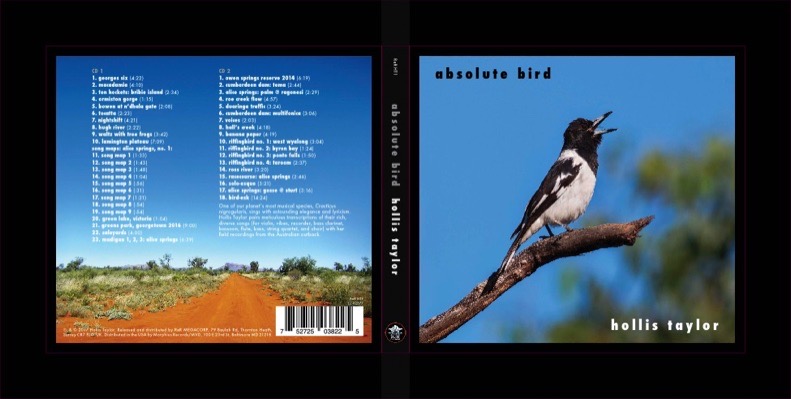
Hollis Taylor – CD of recorded bird song
Tanya Kovats
Professor Tania Kovats from the University of Dundee focuses her practice and research as an artist on the exploration of our experience of landscape with an environmental emphasis. I have included her in this list of practitioners whose work interests me, not just because of her love of drawing but because her drawing practice is opposite to mine.
Her practice is described in this way: “Kovats is an advocate for drawing in its expanded field, as a highly significant tool of thinking and expression, that provides an infinite and varied means of communication that continues to be expanded and enriched by practitioners”.
What can I learn from Tanya Kovats?
“Drawing in its expanded field’ – for me this requires an expanded thought! I want to explore this further and there simply isn’t the time for it now. I can relate to the concept of drawing as a ‘tool’ for thinking and expression but until now, I follow a traditional route which I love. But Kovats practice totally intrigues!
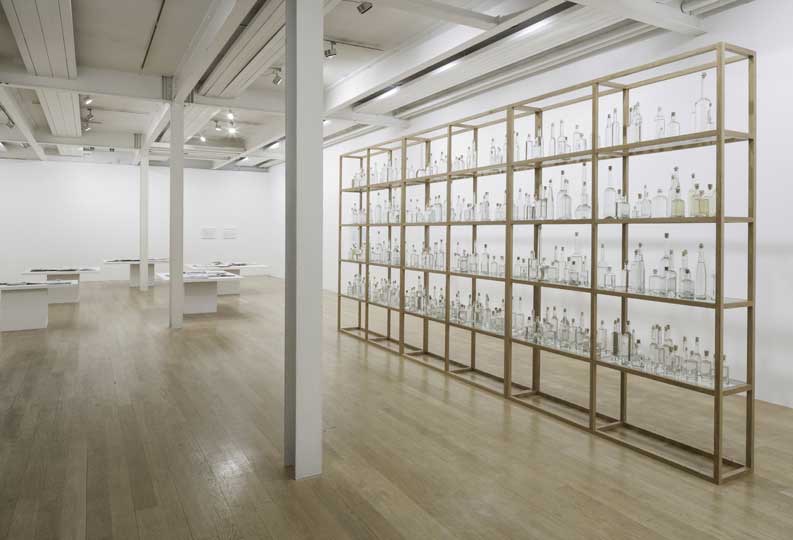
Tania Kovats – Oceans
Albert Irvin
For me, Albert Irvin’s subject matter represents a total love of life. His work focuses on the urban environment and all of his paintings carry the names of streets. He sees this as symbolic of a journey, his walking through the world.
He came to abstraction through the influence of the Abstract Expressionists. In his words, He found …”it was possible to say what it felt like to be a human being without having to paint noses and feet.”
In interviews I’ve listened to with him, it is his humility that stands out and this seems a strong contrast with the dynamism of this work. He talks about ‘being able to put something back into life that improves it.”
An element of his work which resonates with mine is his inclusion of classical music. This use of ‘sound’ is different in many respects from mine and yet, as I think about it, I wonder if it is. He loves the ‘immediacy’ of music and finds that his mark making and intuitive use of colour carries the same element in his work. He sees his marks as autobiographical – when he puts a mark down, it establishes where he was at a given moment.
What can I learn from Irvin?
His intuitive and courageous expression of colour! He uses it in a way that I am striving for and believes in the immense power it has in the dialogue between the artist and the viewer.
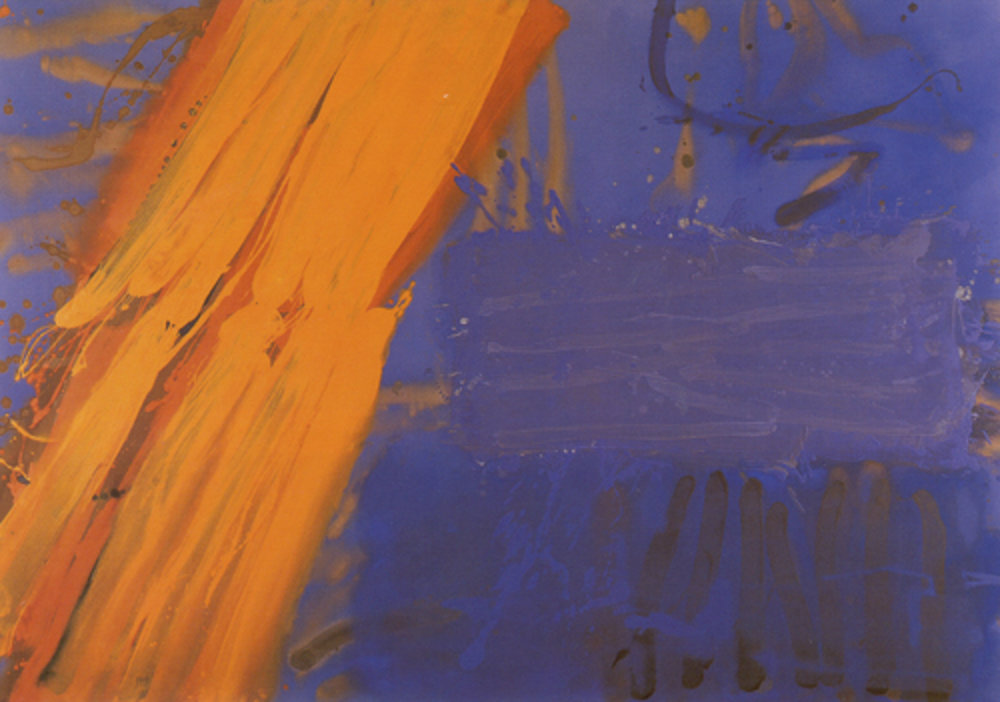
Albert Irvin – kestrel
